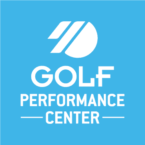Golf is a very difficult game. We all know how frustrating it can be when the result of your shots is not what you envisioned. Improving your overall physical performance can be just as difficult and it too becomes frustrating when your work in the gym is not seeming to progress at the pace you had planned. All is not lost in either situation, however, and if you want to find success and ultimately reach your goals your mindset must be adaptable. I encourage you to be open to the fact that there is no “cookie cutter” way to mastering the game of golf, nor your quality of movement, strength, and power. This does not mean you have to settle or lower your standards, it simply means not everyone’s roadmap will look the same.
At GPC we offer countless feedback tools to allow our golf athletes the ability to quantify their improvement. We trust the feedback of numerous pieces of technology as we help our athletes develop. From K-Vest, BodiTrak, GEARs, and SAM PuttLab, to the Functional Movement Screen, a variety of golf specific screens, and physical proficiencies (like your vertical jump, sit up and throw, and medicine ball shot put throw on the physical side), we are able to quantify the lead factors that result in lower scoring averages down the road.
In an ideal world, your scoring average would drop significantly each year, but this game isn’t easy. In fact, scoring average is the LAST area where improvement will be reflected. It is important to consider the positive changes you have made on the way to the bigger picture and how those puzzle pieces will ultimately be put together to get you the results you have been working so hard for.
I encourage everyone to schedule an updated physical evaluation so we can gather baseline numbers for the off-season and determine where you need to dedicate more time in the coming months.
See you in the Zone!



Your article helped me a lot, is there any more related content? Thanks!
Can you be more specific about the content of your article? After reading it, I still have some doubts. Hope you can help me.
I don’t think the title of your article matches the content lol. Just kidding, mainly because I had some doubts after reading the article.
Your point of view caught my eye and was very interesting. Thanks. I have a question for you. https://www.binance.com/bg/join?ref=V2H9AFPY
all hyperbolic steroids are also anabolic
References:
Legal Steroids 2014 (motionentrance.edu.np)
Your point of view caught my eye and was very interesting. Thanks. I have a question for you. binance
Can you be more specific about the content of your article? After reading it, I still have some doubts. Hope you can help me.
Your article helped me a lot, is there any more related content? Thanks!
This paragraph offers clear idea designed for the new viewers
of blogging, that really how to do blogging and site-building. https://22betcasinonz.wordpress.com/
hgh fragment 176-191 kaufen
References:
peatix.com
Ipamorelin and sermorelin are two of the most frequently discussed peptides in the
context of growth hormone therapy, especially among individuals
seeking natural ways to boost their anabolic response without resorting to
direct growth hormone injections. Although both peptides
ultimately stimulate the release of growth hormone from the pituitary gland, they differ significantly in structure,
potency, duration of action, and clinical use.
Understanding these differences can help practitioners and patients alike choose the most appropriate
therapy for a given goal.
—
Ipamorelin vs Sermorelin: Decoding the Differences in Peptide Therapies
Structural Foundation
Sermorelin is a 23-amino acid peptide that closely mimics
the natural growth hormone-releasing hormone (GHRH) secreted by the hypothalamus.
It has been used clinically for many years, particularly in pediatric endocrinology and research settings.
Ipamorelin, on the other hand, is a synthetic pentapeptide composed of only five
amino acids. Its brevity confers distinct pharmacokinetic properties that set it apart from longer peptides like sermorelin.
Mechanism of Action
Both peptides ultimately bind to receptors on pituitary somatotrophs, prompting the release of growth
hormone (GH). However, their receptor affinity and downstream signaling differ.
Sermorelin activates GHRH receptors with a moderate potency, leading to a relatively sustained but lower peak GH secretion. Ipamorelin targets the ghrelin receptor (GHS-R1a)
with high specificity and is known for producing
a sharper spike in GH levels. The difference in receptor engagement also explains variations in side-effect profiles.
Potency and Dosing Regimen
Because of its higher potency, ipamorelin requires far lower doses
to achieve comparable GH release. Typical daily dosing
of ipamorelin ranges from 200 to 400 micrograms administered subcutaneously, often split into multiple injections per
day. Sermorelin is usually dosed at about 100 to 250 micrograms per injection and may
be given once or twice daily. The smaller dose requirement for ipamorelin can translate into lower cost over time, though the total expenditure depends on the frequency of administration.
Duration of Effect
Sermorelin has a relatively long half-life of about 60 minutes to an hour when injected
subcutaneously, which means its GH stimulating effect lasts for several hours.
Ipamorelin’s action is more rapid but shorter in duration; it peaks quickly and then declines within a few hours.
This difference influences the timing of injections relative
to sleep cycles or exercise regimens.
Safety Profile and Side Effects
Sermorelin has been studied extensively in clinical
trials and generally exhibits a low incidence of adverse events.
Common side effects reported include mild injection site reactions,
headaches, and transient increases in blood pressure.
Ipamorelin is also well tolerated, with the most frequently observed issues being localized discomfort at the injection site or occasional dizziness.
Because ipamorelin acts via ghrelin receptors, some
users report increased appetite, although this effect is typically modest.
Clinical Applications
Sermorelin’s moderate GH release makes it suitable
for patients requiring a steady increase in hormone
levels, such as children with growth deficiencies or adults with mild
HGH insufficiency. Ipamorelin’s sharper peak is often preferred
by athletes and bodybuilders who aim to maximize
anabolic signaling around training sessions or during the night when muscle recovery occurs.
Additionally, ipamorelin’s appetite-modulating properties can be advantageous for individuals seeking to
maintain lean mass while restricting caloric intake.
Regulatory Status
In many jurisdictions, sermorelin is available only by prescription and has been approved for certain clinical indications.
Ipamorelin remains primarily a research chemical in most regions; it is
not yet FDA-approved as a therapeutic agent. Users should therefore verify
local regulations before obtaining or using either peptide.
—
Ipamorelin vs Sermorelin Comparison
Feature Ipamorelin Sermorelin
Length of Peptide 5 amino acids 23 amino acids
Receptor Target Ghrelin receptor (GHS-R1a) Growth hormone-releasing hormone receptors
Potency High; lower dose needed Moderate; higher dose required
Peak GH Response Rapid spike within 30–60 minutes Gradual increase over 1–2 hours
Duration of Action Shorter; peaks quickly Longer; sustained release
Typical Dose 200–400 micrograms daily, split injections 100–250 micrograms per injection
Common Side dianabol effects before and after Injection site discomfort, mild dizziness,
appetite ↑ Headache, transient blood pressure rise, injection site reaction
Clinical Use Bodybuilding, athletic performance, rapid GH release Pediatric growth deficiency, adult HGH insufficiency,
steady hormone increase
Availability Research chemical; prescription limited Prescription-only in many countries
Key Takeaways from the Comparison
The shorter sequence of ipamorelin translates into higher potency and a
quicker onset of action.
Sermorelin’s longer peptide chain results in a more prolonged GH release,
making it suitable for steady-state therapy.
Dosage differences are significant; ipamorelin requires less frequent injections
at lower microgram levels.
Side-effect profiles overlap but differ in intensity and type,
with ipamorelin potentially increasing appetite slightly due to
ghrelin receptor activation.
Regulatory status varies by country; sermorelin is often legally prescribed whereas ipamorelin remains largely a
research product.
Key Takeaways
Mechanistic Distinction: Ipamorelin and sermorelin stimulate growth hormone secretion through different
receptors, leading to variations in potency and duration of action.
Dose Efficiency: Ipamorelin’s higher potency means smaller doses are needed for
a comparable GH surge, potentially reducing
overall cost and injection frequency.
Therapeutic Focus: Sermorelin is better suited for patients requiring steady hormone levels over time, while ipamorelin is favored
by athletes seeking rapid anabolic spikes around training or sleep.
Safety and Tolerability: Both peptides are generally well tolerated; however, ipamorelin may modestly increase
appetite due to its ghrelin receptor affinity.
Regulatory Landscape: Sermorelin enjoys broader clinical approval in many regions, whereas ipamorelin remains largely a research chemical pending regulatory review.
In summary, the choice between ipamorelin and sermorelin hinges on the desired
pharmacodynamic profile, dosing convenience, patient safety considerations,
and legal availability. By aligning these factors with specific therapeutic objectives—whether it be enhancing growth in children, improving adult hormone levels, or maximizing performance gains—healthcare providers and patients can make an informed decision about which peptide best fits their needs.